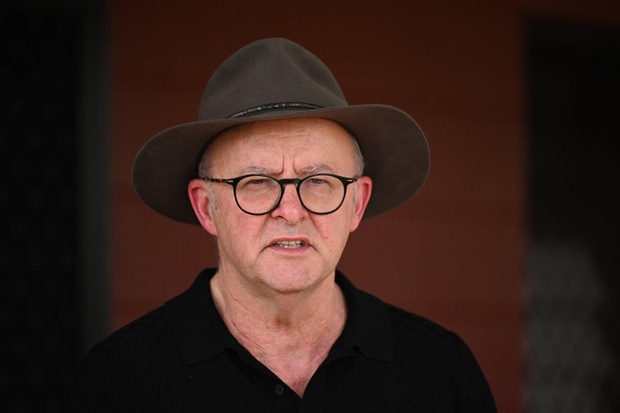In a visit to the Top End today, Prime Minister Anthony Albanese will announce the Government’s commitment to fully fund each territory student to the Schooling Resource Standard (SRS).
The funding needed for a public school student in the NT is almost double the national average because of the Territory’s remote locations and large Aboriginal and Torres Strait Islander population.
Under the new agreement, the Federal Government will invest an additional $737.7 million in the next five years, while the NT government will invest $350 million.
Commonwealth funding will jump from 20 per cent to 40 per cent of the SRS, with the NT government committed to jumping to 60 per cent by 2029.
Albanese told ABC Radio Darwin today that the funding agreement would “bring students up to the standard that the Gonksi report, all those years ago, said was necessary”.
“Every young person, no matter where they live or their circumstances, deserves to have the best start to life,” he said.
“Access to a world-class education is critical to that."
Albanese said education and equality go hand in hand, however access to quality education has been out of reach for many in the Northern Territory.
Latest figures from the Productivity Commission show that 48 per cent of NT public school students experience "low socio-educational advantage".
“So if you look at the amount of additional fund per student, the Northern Territory will receive more than any other state or territory because its needs are greater,” Albanese said.
The Australian Education Union welcomed the news.
AEU federal president Correna Haythorpe said the present funding situation was “shameful”, with NT public schools receiving the lowest proportion of SRS funding, despite having the highest levels of student need.
“This funding is long overdue and will change lives in the NT,” Haythorpe said.
“The bulk of the funding must be delivered well before 2029, because we know that teachers and students need resources now.”

AEU federal president Correna Haythorpe said the Albanese Government needs to now lift its funding offer to Tasmania, Queensland, Victoria, NSW and South Australia from 22.5 per cent of the SRS to 25 per cent.
Haythorpe said the Albanese Government’s commitment to provide 40 per cent of the SRS funding for the NT is a just recognition of its superior revenue raising capacity and its responsibility to ensure every child across the nation gets the support they need to succeed.
AEU NT branch president Michelle Ayres, meanwhile, said full funding would make a huge difference across the NT.
“Funding NT schools at 100 per cent of the SRS means extra support for students with complex needs and those at risk of falling behind, more teachers, counsellors, support staff and Aboriginal and Torres Strait Islander education workers,” she said.
NT Chief Minister Eva Lawler welcomed the agreement, and said education could “change the lives” of Territory children.
“Providing extra funding to territory schools means more than just being fair – it gives more resources to schools and teachers to help kids be better equipped to enter the workforce,” she said.
Federal Education Minister Jason Clare said one in five children in the Territory were not receiving funding.
“This agreement means the most underfunded schools in Australia will now be fully funded,” he said.
Greens spokesperson on Primary and Secondary Education, Senator Penny Allman-Payne, however, has slammed the deal as too little, too late, and said it will actually lock in underfunding for the most disadvantaged students in the country.
“... it’s a half-arsed effort that will not deliver 100 per cent of the Schooling Resource Standard to a single Territory student,” Allman-Payne said in a statement.
My reaction to the NT school funding deal 👇🏽#saveourpublicschools pic.twitter.com/asWjBsxDn2
— Penny Allman-Payne (@senatorpennyqld) March 12, 2024
“Labor created this broken funding model when they fumbled the Gonski recommendations, and now they’re delivering a sloppy patch-up job and declaring ‘mission accomplished’.
“Not only is this extra funding not going to be fully delivered until 2029, there is no indication that Labor plans to ditch the dodgy Morrison-era clauses that allow states and territories to deduct 4 per cent in non-school costs from their funding contribution.”
Back In December, an expert panel examining the National School Reform Agreement (NSRA) said the gap between privileged students and those at disadvantaged schools was growing, that inequality was “entrenched”, and that a “moral and economic urgency” was at hand to improve the quality and equity of Australia’s school system.
The Improving Outcomes for All report laid out a blueprint for reform and highlighted the worsening levels of social segregation across the school system – one of the highest levels in the OECD.
At the end of January this year, the Federal Government pledged to increase its share of public school funding by $3 billion a year, but only if state and territory governments committed to the reforms spelt out in the report.
In a first step, the Government agreed to allocate Western Australia an extra $777.4 million for its public schools between 2025 and 2029, with schools in remote areas or those with large numbers of Indigenous, poor, migrant or disabled students, set to receive the extra money as early as next year.
The NT investment is a similar agreement to that struck with Western Australia and ACT, with five more deals (NSW, Victoria, Queensland, South Australia and Tasmania) needing to be locked in by the end of the year.














